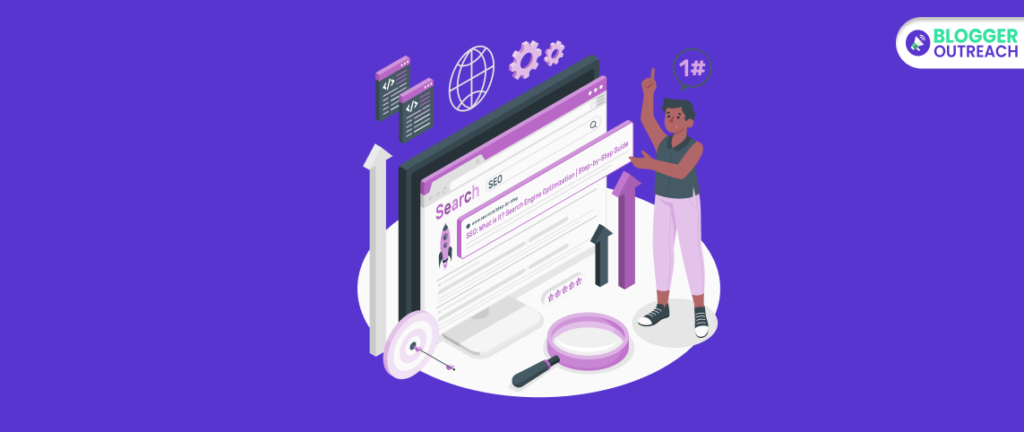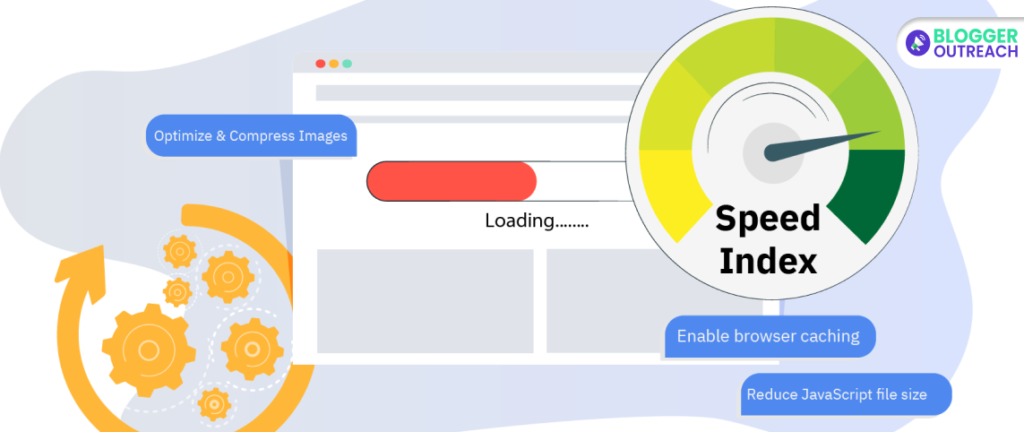Table Of Content
- 1 What Is An SEO-Optimized Landing Page?
- 2 Where Is How To Optimize Your Landing Page For Better Conversions And Higher CTR
- 2.1 Landing Page SEO#1 – Alignment Across Your Goal, Content, And CTAs
- 2.2 Landing Page SEO#2 – Well, Let’s Not Forget Keywords In This Context
- 2.3 Landing Page SEO#3 – Bring Your Keyword Strategy Into Action
- 2.4 Landing Page SEO#4 – Change The Mindset
- 2.5 Landing Page SEO#5 – Do Not Ignore Backlinks
- 2.6 Landing Page SEO#6 – URL Optimization
- 2.7 Landing Page SEO#7 – Take Page Speed Seriously
- 2.8 Landing Page SEO#8 – Complicated Forms Hinder Conversions
- 3 Ending Note To Landing Page SEO (Bonus Tip)
The growth of your landing page fosters the process of lead generation. Most businesses use landing pages for this purpose.
Therefore, optimizing the landing page directly impacts your sales.
But the catch is that SEO and landing pages change with time.
This is due to the rise of misinformation and fake people. People want genuine solutions to their problems. Plus, better user experience.
Therefore, a landing page is the reflection of your business. Thus, it must align your landing page with your brand.
So, what is a landing page SEO? How can you create an SEO-optimized landing page that drives sales?
What Is An SEO-Optimized Landing Page?

An SEO-optimized landing page is a keyword-centered web page with the primary goal of getting visible and bringing conversions.
The keywords are specifically chosen to align with your business.
Certainly, here’s an example of an SEO landing page for a fictitious fitness equipment company targeting the keyword “best home gym equipment.”
Now, when you go to their landing page, you will see they solely talk about the home gym equipment.
If you dig deeper, you will find that SEO landing pages are part of a bigger funnel.
The conversion of SEO landing pages relies on a few essential factors. Content is one of the main factors among them. Relevant and enticing landing page content ensures higher CTR and conversions.
Now, you will be thinking about the ways to optimize our landing page. If yes, then here go:
Where Is How To Optimize Your Landing Page For Better Conversions And Higher CTR
An optimized SEO landing page ensures you reach your target audience swiftly. However, not many people know the ideal way to do so.
Landing Page SEO#1 – Alignment Across Your Goal, Content, And CTAs

In simple terms, you can call it – a lack of clarity. It might sound simple but believe us, we have seen a lot of clients making this mistake repeatedly.
Okay, let us explain the same.
A few months back, we had a client who was struggling with his landing page promoting his free webinar. He had a funnel that aimed to sell his digital marketing course. The top layer of the funnel was intended to attract people to his free webinar.
You might be thinking, where is the mistake? Here is the mistake: He was talking about webinars in his ad copy. However, when you navigate to the landing page, you will find conflicting information. He talked about his course as well as his webinar. We marked this as a blunder. WHY?
There must be an alignment across your messages, landing page, and call to action. Everything should be centred around ONE common goal.
Convoluted information is a clear red flag. In most cases, you will end up with a little conversion. So, before you start putting in any effort, ensure that you are clear with your goal.
Landing Page SEO#2 – Well, Let’s Not Forget Keywords In This Context

Remember, we have already taken an example of “best home gym equipment.”
Basically, we tried to explain the following:
The entire content should be the same if you design a landing page around the same keyword.
To be precise, you should use a transactional keyword here. If you have an eye for details, you might understand that the keyword is long-tail.
The search intent of the keyword “best home gym equipment” is clearly reflecting a purchase intent.
To summarize what we have discussed, target transactional and long-tail keywords.
Landing Page SEO#3 – Bring Your Keyword Strategy Into Action

Now that you have chosen the keywords, it is time to place them. Here are the strategies that will help you place them:
(i) Headline: 8 out of 10 people read the headline of a landing page. However, only 2 out of 10 read the rest of the content.
(ii) Title Tag: The title tag represents your page on SERPs and appears as a clickable blue link. It’s also visible at the top of your browser’s tabs. Focus on crafting a compelling title to encourage more clicks.
(iii) Meta Description: This concise description is located below the title in SERPs. Use it to provide searchers with a preview of the page’s content if they decide to click through.
(iv) Header Tags: In HTML, header tags are organized in a hierarchy from H1 to H6. Your page should feature only one H1 tag, serving as your main headline. If you intend to include subheadings under the H1, utilize H2 tags. For subsequent subheadings, use H3 tags, and so forth.
This hierarchical structure emphasizes the importance of your content. Placing keywords in the H1 tag signals to Google that these are the most significant words on your page.
(v) Image File Names: Always opt for descriptive names when naming your image files. Since Google can’t visually perceive your images, it relies on the textual description provided in the file name. Incorporating keywords into your image titles can enhance your ranking. Remember to separate words with dashes rather than underscores.
(vi) Content Copy: Sprinkle your keywords throughout your content, but do so judiciously. Avoid overusing them, as this practice, known as “keyword stuffing,” can lead to Google penalties.
Landing Page SEO#4 – Change The Mindset

We know that you see landing pages primarily from a conversion perspective.
Moreover, there’s a common perception that landing pages exist as isolated entities or separate from the larger website.
Landing pages often see strategies implemented that might not be considered for blogs or product pages on other parts of the website.
It’s high time to shift this mindset.
Remember that users visit landing pages primarily for an informed choice. To be precise, they want a detailed understanding of something.
The content that you mention to others ultimately leads to conversions. Right?
If you can educate them, inform them – half of the job is done. So, the hack here is not too SALESY but rather informative.
Apart From Answering The Queries, Maintain:
- Brand consistency.
- Adhere to sound SEO practices.
Google has become adept at distinguishing between genuinely informative content and solely focused on selling. This can impact your search engine rankings.
When utilizing product reviews, ensure they don’t appear overly promotional or pushy.
Instead, focus on providing unbiased and valuable insights to help users make informed decisions.
Similarly, if your goal is to boost newsletter sign-ups, prioritize informing your visitors. Clearly communicate the type of content they can expect to receive when they sign up.
Being transparent about the value they’ll gain from subscribing can increase trust and engagement.
Landing Page SEO#5 – Do Not Ignore Backlinks

Earning backlinks to your page remains the most effective organic method for boosting search engine rankings, and here’s why:
To Google, when someone links to your content from their website, it signifies an endorsement of your content’s quality and relevance. In essence, they are vouching for your credibility.
But how can you achieve this?
There are various strategies, but a proven approach combines exceptional content creation with targeted outreach to build links.
First, focus on creating original content. You can use existing results, data, or case studies as references, but avoid direct copying. It’s even better if you’ve conducted your own case study. The more original, well-researched, and valuable your content is, the more likely it will be positively received.
Second, identify influencers in your industry. Find individuals who share your interests through referrals, email research, and social media.
Third, employ a meticulous outreach technique to secure backlinks from authoritative sites like.
Remember that not all links hold the same weight. Small niche blogs might not have the same.
To start, consider targeting bloggers for backlinks. Gradually work your way up to collaborating with more influential figures in your industry. This strategic approach can help you build a strong backlink profile and improve your SERP position over time.
Landing Page SEO#6 – URL Optimization

Even the smallest details, including your landing page URL, matter in this SEO space.
Your URL serves as a vital piece of communication, conveying information about the page’s content. It also provides insights into your site’s structure, illustrating how a particular content fits within your website.
This is instrumental in helping search engines better comprehend the subject matter of your content.
Here Are Some Key URL Best Practices To Consider:
- Length: Aim to keep your URL under 65 characters, with the ideal length falling between 50 and 60 characters.
- Separator: Utilize hyphens to separate words within the URL.
- Case: Use lowercase letters exclusively in your URL.
- Structure: Employ forward slashes to distinguish between concepts, much like you would use a vertical pipe in a title.
- Keyword Placement: Position essential landing page keywords towards the beginning of the URL.
Remember, search engines and humans benefit from the URL. So, make the necessary changes as required.
Landing Page SEO#7 – Take Page Speed Seriously

This comes under user experience. Precisely, it is part of core web vitals.
You can leverage PageSpeed Insights, GTmetrix, Dareboost, WebPage, and others to check your speed.
Once you find the issues, fix them.
Next, optimize your landing page for mobile devices. Google prioritizes mobile-friendly pages in search results. So, ensure your page is responsive and provides an excellent user experience on smartphones and tablets.
Page speed is a critical factor for both SEO and user experience. Compress images, minimize code, and use browser caching to improve page load times. This not only satisfies the SEO requirement but also enhances user satisfaction.
Landing Page SEO#8 – Complicated Forms Hinder Conversions

There is a common trait we have observed over the years…
Landing page users are usually impatient.
It may sound negligible.
However, you need to consider this essential.
If you dig deeper, you realize that forms are also part of your user experience.
So, The Aim Is To Make The Process As Easy As Possible Through The:
- Through short and to-the-point forms.
- Avoid putting complicated fields in your forms.
- A clear call to action.
To sum up, refrain from a complicated landing page form.
Otherwise, you will impact your conversion rate and higher bounce rate.
Ending Note To Landing Page SEO (Bonus Tip)
Regarding landing pages, visual appeal is pivotal. Guess what? We are talking about design.
Starting from your colour, and font, to your visuals – everything must look appealing. By doing so, you entice people to stay longer with your site.
We expect to take every piece of advice seriously and start working towards it.
Need SEO help? BloggerOutreach is on a mission to take businesses to new heights.
To know more, visit our website.
Read Also:








